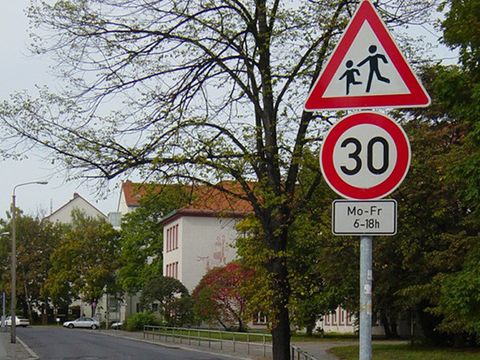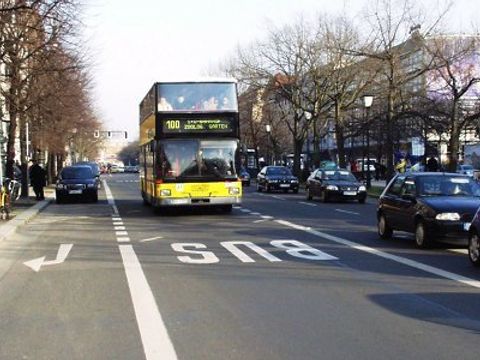The road traffic authorities decide whether road traffic measures are necessary for the control of the road traffic and transport in the interests of safety and regulation. On the basis of the road traffic regulations the authorities decide which traffic regulation orders have to be made. These are road signs and road markings, but also traffic facilities as traffic lights and parking meters.
Primary local point of contact are the road traffic authorities within the borough offices. They decide on the city-wide establishment of
- delivery and loading areas for shops,
- reserved parking spaces for seriously disabled persons,
- parking areas for residents,
- cycling facilities, and the obligation to use bicycle lanes,
- taxi stops and
- the safety of bridges and level crossings.
Furthermore, they basically decide on all traffic measures within the secondary road network.
The Berlin Traffic Control as a central road traffic authority is focusing on city-wide and important regulations, mainly regarding the major road network. In the whole city area it decides on
- the necessity and installation of traffic lights,
- route signing,
- parking guidance systems,
- the creation of bus lanes and stops in accordance with the transport provider (BVG)
- road traffic measures for diplomatic missions and federal authorities (including the required security measures), and
- the marking of regional cycling routes.
- In the major road network the Berlin Traffic Control decides on
- speed limits, one-way streets, right-of-way regulations and ban on turns,
- pedestrian crossings,
- restrictions according to the Federal Pollution Control Act, i. e. measures in order to protect the resident population against traffic-related noise and air pollution by gases, as e. g. the environmental zone and the speed limit of 30 km/h at night.
The road traffic authorities closely cooperate with the police, the road construction and maintenance departments (predominantly the borough offices for civil engineering), the transport provider BVG, the environmental authorities, and – according to the situation – also include the respective interest groups. An informal application can be made at any time.


